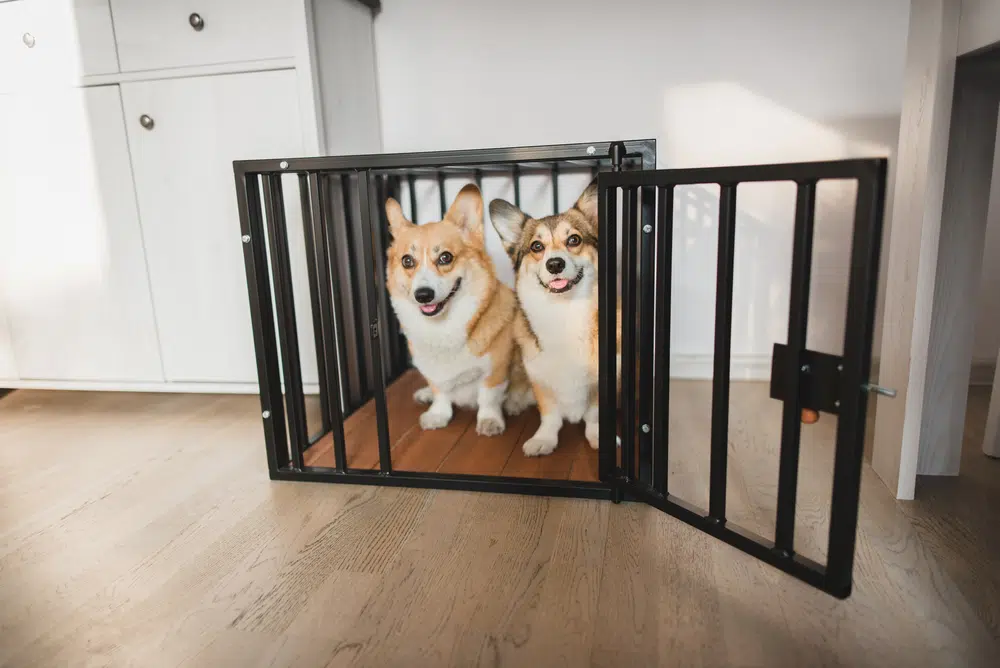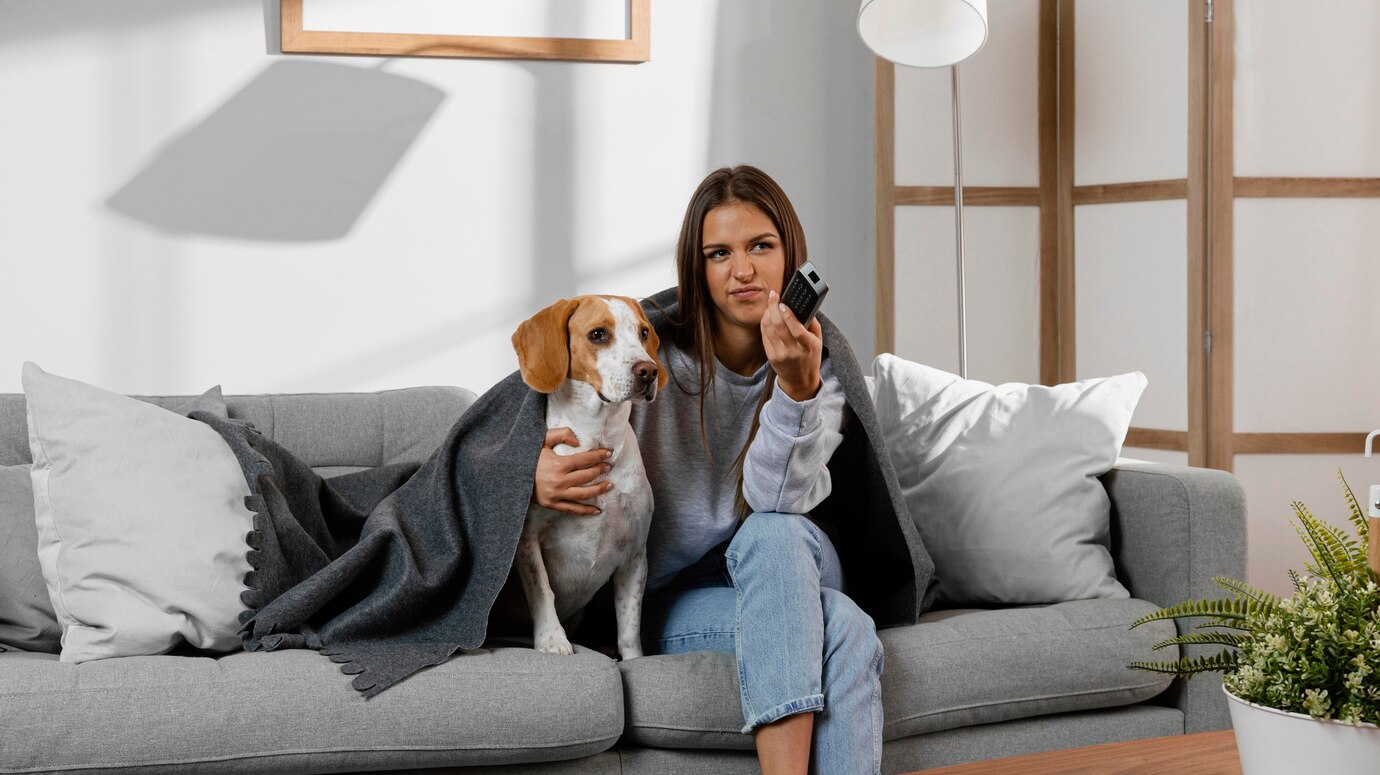While it might seem like a space-saving solution or a way to keep your dogs close, putting two dogs in one crate can pose various risks and challenges for their well-being and behavior. In this article, we’ll explore the considerations, alternatives, and potential consequences of housing multiple dogs in a single crate.
Introduction to Crating Dogs
Crating is a widely recognized training method and temporary sheltering technique for dogs. It serves as a safe and secure space where dogs can retreat to feel protected and at ease. The concept of creating is grounded in providing dogs with a sanctuary that mimics the sheltering instincts of their wild ancestors, offering a sense of security and a place to rest and sleep undisturbed.
Importance of Crating for Dogs
Crate Training plays a pivotal role in fostering a sense of safety and security for dogs. They act as a refuge, especially in unfamiliar or stressful environments, helping in reducing anxiety and stress in dogs.
Crates are not just protective enclosures; they are instrumental as a training tool for establishing routines and boundaries, aiding in house training puppies, and managing destructive behavior. The structured environment of a crate helps in instilling discipline and promoting desirable behavior, making it an essential component in behavioral training.
Why Owners Consider Crating Dogs Together
Many pet owners contemplate crating dogs together for practical reasons such as cost and space efficiency. Crating more than one dog together can save money and space, particularly beneficial for owners with limited space and multiple dogs. The notion of companionship is another driving factor behind this consideration.
The belief is that crating dogs together can offer them companionship with, alleviate loneliness, and be comforting, particularly for dogs that share a close bond. However, this approach comes with its own set of challenges and concerns, necessitating a thorough understanding of dog crating basics and careful consideration of individual dog needs and temperaments.
The Dilemma of Crating Dogs Together
The idea of crating dogs together brings forth various concerns and considerations. Potential aggression, stress, and conflicts are significant concerns that need meticulous consideration. The temperaments, sizes, relationships, and individual needs of the dogs are crucial factors that dictate the feasibility of crating them together.
A balanced approach, weighing both the benefits and risks, is imperative to make informed and responsible decisions regarding crating dogs together. This involves delving into diverse perspectives and recommendations, and possibly consulting with behavioral training experts to ensure the well-being and safety of the dogs involved.
Other Thoughts on Crate Training
Crating is an invaluable practice in dog training and care, serving multiple purposes from being a training aid to a safe haven. While the prospect of crating dogs together may seem appealing for various practical and companionship reasons, it is fraught with challenges and concerns that demand careful consideration and a balanced approach. The well-being and safety of the dogs should be the paramount consideration in any decisions related to crating.
Part 2: Pros and Cons of Crating Dogs Together
Potential Benefits of Crating Dogs Together
Crating dogs two or more dogs together can offer several advantages, with the primary benefits being cost and space efficiency. For dog owners with multiple dogs and limited space, this approach can be both economical and practical.
Additionally, the aspect of puppy companionship and comfort is significant, especially for puppies. Crating puppies together can aid in their socialization process and provide mutual comfort, reducing feelings of loneliness and anxiety in their formative months.
Potential Problems with Crating Dogs Together
However, the practice of crating dogs together, especially as they mature to older dogs, is fraught with challenges and risks. The confined space of a crate can induce the fight or flight response, leading to potential aggression and stress. Resource guarding is another critical concern when crating dogs together, particularly as they reach adolescence. Adult dogs might become aggressive due to competition for resources like food, toys, and space within the crate, leading to conflicts and heightened stress levels for humans.
As puppies grow, their individual needs, preferences, and behaviors become more pronounced, necessitating the need for personal space and separate crates. Around six months of age, when puppies reach adolescence, it becomes crucial to provide them with individual spaces to avoid conflicts and cater to their evolving needs and preferences. This is supported by guidelines and insights from reputable organizations like the American Kennel Club (AKC), The Humane Society, and Association of Professional Dog Trainers (APDT).
Balancing the Pros and Cons
When considering crating dogs together, it’s imperative to balance the potential benefits against the possible risks and challenges. Informed decision-making is crucial, involving careful observation of the two dogs’ behavior, preferences, and compatibility. It’s essential to assess whether the benefits of companionship and space efficiency outweigh the risks of stress, aggression, and conflicts.
Consultation with veterinarians or dog behavior experts is highly recommended to assess the suitability of crating dogs together with an other dog. Seeking professional advice can provide insights into managing potential problems, ensuring the well-being of the dogs, and making adjustments to accommodate the individual needs and preferences of each dog.
Recommendations For Multi Dog Households
While crating dogs together, especially very young puppies together, can have its benefits in terms of companionship and space efficiency, it is essential to be mindful of the potential problems that can arise as dogs mature. After six weeks it is recommended to transition to one dog one crate. The well-being and comfort of the dogs should always be the paramount consideration, and individual needs and preferences should be respected, especially as puppies reach adolescence, to foster a harmonious and positive living environment.
Exploring Different Types of Crates
When it comes to crating dogs, choosing the right type of crate is crucial. There are several options available, each with its unique features and suitability.
- Wire Crates:
- Description: Wire crates are constructed with metal wires, providing ample ventilation and visibility for the dog. They often come with a removable pan for easy cleaning.
- Suitability: These crates are suitable for dogs that enjoy being able to see their surroundings and require a well-ventilated space. They are secure and often used for training and housebreaking.
- Soft-sided Crates:
- Description: Canvas crates are lightweight and portable, made with fabric and usually supported by a metal frame. They are easy to fold and transport.
- Suitability: Ideal for travel and temporary use, canvas crates are suitable for well-behaved dogs that do not chew or scratch excessively.
- Plastic Crates:
- Description: Plastic crates are durable and enclosed, offering more privacy to the dog. They are often used for airline travel due to their sturdy construction.
- Suitability: These crates are suitable for dogs that prefer a cozy, den-like space and are often used for safe transportation of pets, and are more suitable for small dogs.
Choosing the Right Crate
Selecting an appropriate crate involves considering various factors and assessing the specific needs of the dog.
- Factors to Consider:
- Size: The crate should be spacious enough for the dog to stand, turn around, and lie down comfortably.
- Durability: A durable crate is essential to withstand potential damage and ensure the safety of the dog.
- Airflow: Proper ventilation is crucial for the dog’s comfort and well-being.
- Assessment of Needs:
- Individual Needs: The specific needs and preferences of the dog, such as the desire for privacy or visibility, should influence the choice of crate.
- Purpose: The intended use of the crate, whether for training, travel, or other purposes, affects the selection. For instance, a crate used for behavioral training might differ from one used primarily for travel.
Importance of Suitable Crating
Choosing a suitable crate is paramount for the well-being and comfort of the dog. An appropriate crate provides a sense of security and aids in behavioral management, while an unsuitable one can lead to stress, anxiety, and potential health and behavioral issues.
The right crate can serve as a safe haven, fostering positive behavior and providing a secure space, whereas inappropriate crating can result in negative outcomes like aggression and escape attempts. The ultimate goal of the crate train process is to ensure the dog’s happiness, comfort, and safety through suitable crating choices.
Part 4: Best Practices for Crating Dogs Together and Transitioning Them to Their Own Crate
Assessing Compatibility
Before deciding to crate dogs together, assessing their compatibility is of paramount importance. Observing the interactions between dogs is crucial, focusing on identifying signs of relaxed body language and positive play behavior, which are indicative of compatibility.
Implementing trial periods in a controlled environment is also essential. During these periods, dogs can spend short amounts of time together while their behavior is closely monitored for any signs of aggression or discomfort. Especially as puppies approach adolescence, vigilance and discernment in assessing compatibility are vital.
Creating a Positive Environment
Once the compatibility of the dogs is ascertained, the next step is to create a positive and harmonious environment within the crate. This involves providing ample resources such as food, water, and toys to prevent any competition and resource guarding.
It’s also important to remove any high-value items that could potentially trigger aggression, particularly as puppies mature and their individual preferences develop. Ensuring that the crate is comfortable and spacious is fundamental, with each dog having enough room to move freely. As puppies grow, providing separate resting spaces within the same crate becomes increasingly important to cater to their evolving needs and preferences. Creating a Positive Environment
Monitoring and Intervention
The process of crating dogs together involves regular monitoring and timely intervention. Initially, constant supervision is necessary to ensure that any conflicts that arise can be promptly addressed, with the aim of gradually increasing the time the dogs spend together as they consistently exhibit positive behavior.
If any signs of aggression or discomfort are observed, it’s highly recommended to seek advice from a veterinarian or a professional dog trainer. Transitioning to separate crates is strongly advised once puppies reach adolescence to accommodate their evolving needs and to avoid conflicts. Professional Dog Training Advice
Health and Well-being Considerations
The health and well-being of the dogs are paramount considerations when crating them together. Regular veterinary check-ups are essential to ensure the health of both dogs, with a focus on monitoring for any signs of stress or illness as they mature.
Providing adequate mental stimulation and exercise is crucial to prevent boredom and frustration. The importance of transitioning to separate crating once puppies reach adolescence is emphasized, focusing on the role of mental and physical well-being in promoting harmonious coexistence and preventing conflicts, ensuring Mental and Physical Well-being
Final Thoughts on Crate Best Practices
Crating dogs together can offer benefits, but it necessitates meticulous observation, the creation of a positive environment, regular monitoring, and adherence to professional advice. The transition to separate dog crates even as puppies mature is crucial to meet their individual needs and preferences, ensuring their overall well-being, and fostering a harmonious and positive living environment.
Part 5: Conclusion and FAQs
Conclusion
Crating dogs together can be a nuanced endeavor. It requires meticulous consideration, observation, and ongoing assessment. The well-being, comfort, and safety as the dogs share a crate together are paramount. It’s crucial to create a positive environment, monitor interactions, and seek professional advice when needed. As dogs mature, especially puppies reaching adolescence, individual needs and preferences necessitate separate crates.
FAQs
- Can puppies be crated together?
- Yes, puppies can benefit from the companionship, but as they approach adolescence, separate crating becomes essential.
- What are the signs of compatibility between dogs?
- Signs include relaxed body language, positive play behavior, and a lack of aggression or excessive competition for resources.
- How can conflicts be minimized when crating dogs together?
- Providing ample resources, creating a comfortable environment, and regular monitoring are key. Seeking professional advice is crucial for addressing signs of discomfort or aggression. Professional Dog Training Advice
- Is it necessary to have separate resting spaces within a shared crate?
- Yes, separate resting spaces are important to cater to individual preferences and needs, especially as dogs mature.
- When should dogs no longer share a crate?
- Dogs, especially puppies, should have individual crates once they reach adolescence, around six months of age, to prevent conflicts and cater to individual needs. FurLyfe Training Guide
Final Thoughts
Crating dogs together is a practice that can offer benefits in terms of companionship and space efficiency when dogs share together. However, it’s laden with complexities and potential challenges. Balancing the benefits against the risks, respecting individual needs, and making informed, thoughtful decisions are crucial for the happiness and well-being of the dogs involved.
Interesting Reads:
Introduction to the Cockalier: A Delightful Mix of Charm and Warmth















Get involved!
Comments